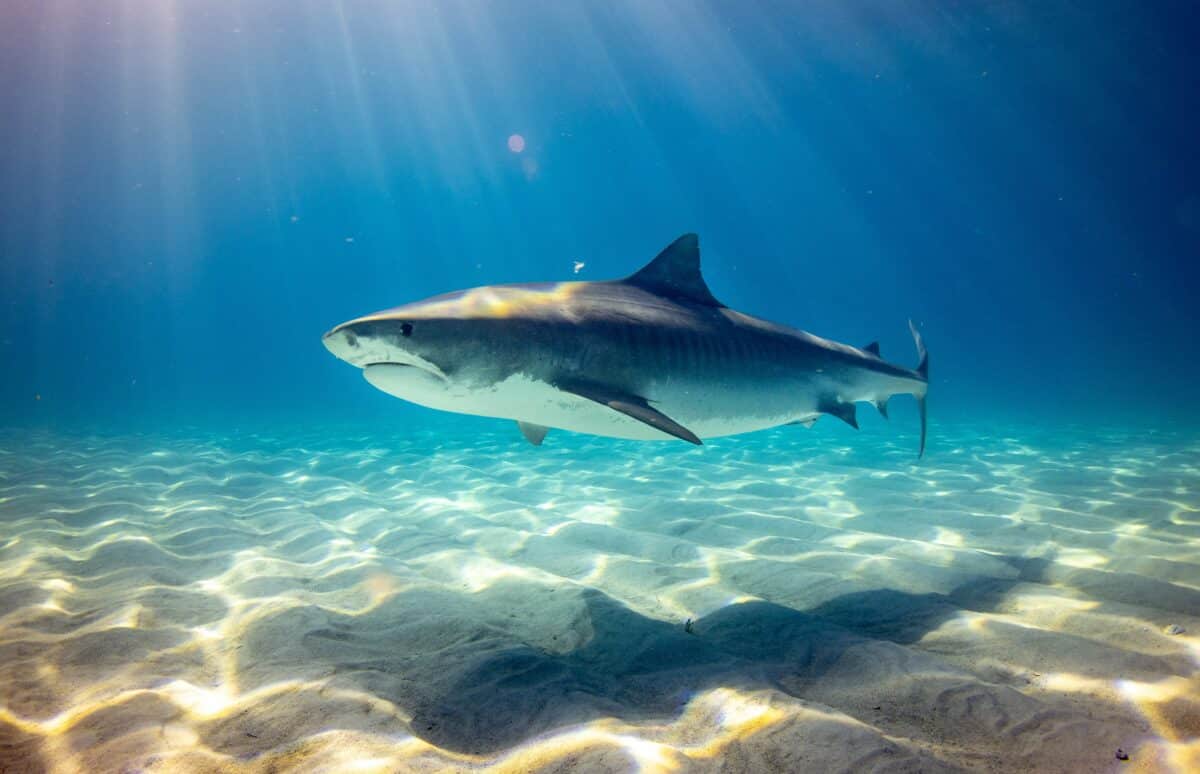New Jersey is known for its amazing beaches. However, these beaches are famous for another less appealing reason – the horrible shark attacks. The first shark attack in New Jersey was recorded more than a century ago, in 1916.

In the same year, five shark attacks in New Jersey were recorded within a short span of only twelve days. These days there are many drones that sea crews use to keep an eye on potentially dangerous sea creatures.
This practice has helped save many lives. However, despite the many safety measures in place, there were still 73 shark attacks worldwide in 2021. Out of those, 45 occurred in the US.
Here, we discuss in detail the history of shark attacks in New Jersey and the most recent observations. So, without further ado, let’s get into the catch.
New Jersey Shore Shark Sightings
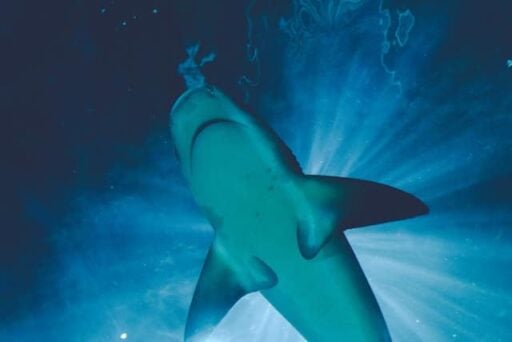
Shark sightings at the Jersey Shore are nothing new. Five secured ocean beaches in New Jersey are open to visitors without a fee. They’re all conveniently situated in the Philly-favored beach villages between Cape May and Atlantic City.
Sharks can survive in fresh and saltwater, and certain shark species can even thrive in both. There are sharks near the Jersey Shore, despite the colder seas, and reports of sightings are becoming more and more common.
Recent Shark Sightings
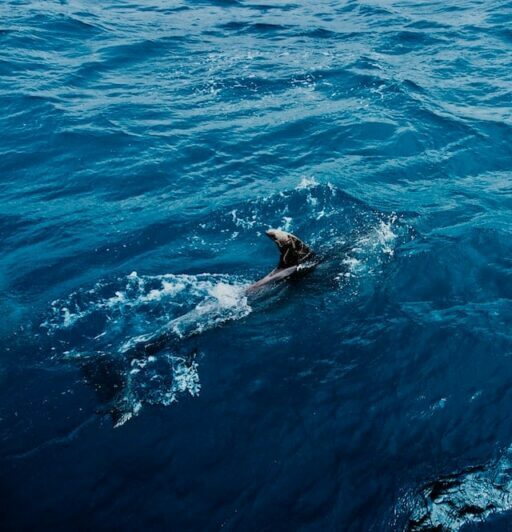
We should be aware of recent environmental changes that have caused a rise in shark sightings. The shark population has been sharply declining for the past 30 years. But the increasing fish growth provides the sharks with more food sources, which consequently increases the shark population as well.
Additionally, as ocean temperatures rise, sharks are moving farther North. This explains why reports in Atlantic City, Toms River, and farther North have increased. Here we have the most recently reported shark encounters.
- Three miles off the shore of Cape May, on July 12, 2021, a 1,400-pound shark was sighted. The great white species, 13 feet long, was returned to the water. He was given the name Breton in honor of the area where he was found.
- A 1,000-pound white shark was sighted off the New Jersey coast in late April 2022.
- An 883-pound shark named Freya was confirmed to have passed by just a few kilometers from Toms River, New Jersey, on July 2 by a shark research organization.
Shark Species Found In New Jersey Waters
The coastal salt marsh covers 200,000 acres in New Jersey, and eight shark species call these waters home.
#1 Sand Tiger Shark
A type of shark found globally in temperate and subtropical waters is the sand tiger shark. According to an associate professor at Monmouth University, the “surf zone” is home to many animals, including sand tiger sharks and sandbar sharks.
Recently, a man in New Jersey caught a seven-foot giant sand tiger shark. Later, he let that shark go. After the release of the sand tiger shark, he stated that “everyone’s thrilled to witness healthy release.”
#2 Sandbar Shark
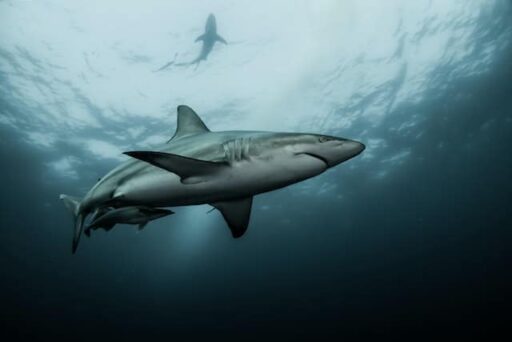
This species is said to be among the most prevalent off the coast of New Jersey. They are often seen swimming around sandbars, hence their name. However, they prefer shallow waters over sandbars; therefore, they can also be found there in bays, harbors, and river mouths.
They have a rounded snout that adds to their average length of up to eight feet, which is already moderately long. For this species, the bays of Delaware and Barnegat are the nurseries where these species habitats.
#3 Smooth Dogfish Shark
It is a small shark species that can reach lengths of up to three feet. They have huge, oval, closely-spaced eyes and each eye has a spiracle just behind it. Its body is slender, with gray color above and white below.
Separate populations of this species can be found in the western Atlantic Ocean and are widely spread out. In the North, their range stretches to eastern Canada, and in the South it stretches as far as Argentina. During summer, they migrate close to shore and farther North, while in the winter, they travel offshore and farther South.
#4 Blacktip Shark
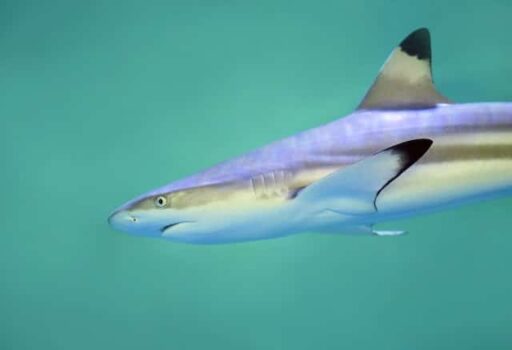
The blacktip shark is not a species that has been present in New Jersey for very long. But some of these shark species are moving further North due to climate change warming our oceans.
The color of the Atlantic blacktip sharks ranges from gray to gray-brown, with a prominent wedge-shaped stripe on the sides and a lighter color on the belly. Due to their comparable size, shape, pigmentation, and activity, sharks and spinner sharks are frequently mistaken for one other.
Both species are renowned for feasting on schools of fish by jumping and twirling out of the water.
#5 Mako Shark

The average length of this highly migratory species, which lives in the open ocean, is 12 feet – although the largest individuals of this species have the potential to reach much greater lengths. On average they weigh up to 300 pounds.
The endangered Mako shark, commonly referred to as the shortfin Mako shark or the blue pointer, can occasionally be seen off the coast of New Jersey. The largest shark catch in the history of New Jersey was a 926-pound Mako shark caught by a fishing crew.
#6 Thresher Shark

Various shark species can be found swimming off the coast of New Jersey, with the thresher shark being one of the more common ones. The world’s temperate waters frequently harbor thresher sharks.
They stretch from Newfoundland to Cuba in the northwest Atlantic Ocean. The back and underside of a thresher shark’s snout are colored brown, gray, blue-gray, or blackish. The upper part of their sickle-shaped tail fin is incredibly long, approximately half as long as its body.
Also, they are brighter on the sides and completely white below, and there are sometimes white dots on the pelvic and tail fins.
#7 Blue Shark
In New Jersey, blue sharks are quite prevalent. Blue sharks are among the most attractive sharks in the world and the shark that is fished the most heavily worldwide – according to the Shark Research Institute.
They can reach a maximum length of roughly nine feet for males and up to 12 feet for females. Blue sharks’ top and lower tail lobes are very unevenly spaced and have rather large pectoral fins and somewhat thin bodies.
The blue shark, frequently encountered in large numbers, is regarded as a tireless and dangerous stalker.
#8 Chain Catshark
Chain catsharks also go by the name of chain dogfish; unlike other species, these are harmless. They rarely reach 18 inches and feed on squid and small fish. The Chain Catshark is one of the most attractive sharks in the waters around New Jersey.
Because of its chained coloring, their bodies easily camouflage with the substrate. This species produces what are known as “mermaid’s purses,” or eggs, which occasionally wash up on shore. They are widespread in the Gulf of Mexico along the Atlantic coast.
Shark Attacks In New Jersey History
There are two types of shark attacks: human-provoked attacks and unprovoked attacks. An unprovoked attack is when a shark attacks even though the person hasn’t provoked it in any way.
In this instance, provoked refers to human interference with the shark that led to an attack. There have been very few shark attacks in New Jersey, most of which resulted in minor injuries.
#1 Shark Attack In New Jersey (1842)
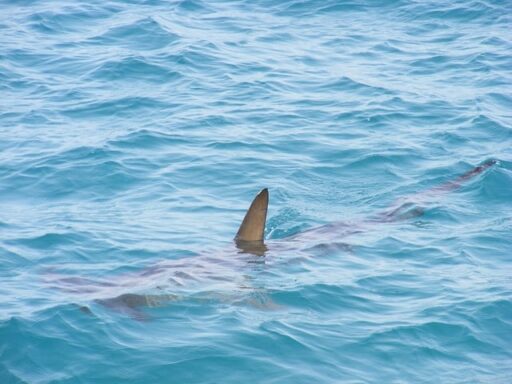
The first documented shark attack in New Jersey took place in 1842. A big shark that got stuck in the shallow seas when the tide went out was sighted by a group of lads clam-digging on the bay’s flats.
The shark defended itself by lunging at the boys as one of them started beating it with an oar. The shark dragged the youngster as he attempted to run, leaving him with a severely amputated limb. The other boys slew the shark.
#2 Shark Attacks In New Jersey (1916)

1916 is the year when the first terrible shark attack was officially recorded in the US. The sea monster attacked five victims, and out of all, only one managed to survive. Since then, people have been more cautious about swimming at New Jersey beaches.
The first death was a 25-year-old guy who went swimming on a New Jersey beach: a shark grabbed his leg and tore off a sizable piece of skin.
The wound eventually caused him to bleed out. A shark took another life in Spring Lake on Beach Haven five days after the first attack. The following assaults happened in an interior creek more than a kilometer away from the nearest bay.
A teenager suffered injuries after a shark bit his leg. Two days later, two fishermen near Matawan Creek stabbed a shark while out on the water. Given the absence of subsequent killings, it is highly likely that the shark killed was the actual predator.
New Jersey Locations With Most Shark Attacks
Unlike Florida, New Jersey is blessed to have had the least shark attacks so far. Although there are much fewer shark attacks in New Jersey they nonetheless happen from time to time. We have listed the locations where shark attacks have been reported in New Jersey.
#1 Atlantic City

In Atlantic City, there have been 5 documented shark attacks. Only one of the five attacks—the one that happened on July 6, 1906, was provoked. The most recent shark attack in this area occurred on August 26, 1965, at Steel Pier in Atlantic City.
A 10-foot-long white shark was one of the most recent shark sightings off the coast of Atlantic City, according to the New York Post.
#2 Ocean City, Cape May County
Five shark attacks have occurred in Ocean City, Cape May County, since 1884. Three of the five incidents involved provocation. Fortunately, none of these attacks proved fatal despite this.
#3 Matawan Creek
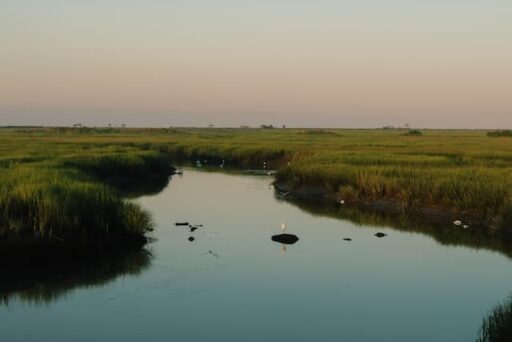
Sharks have struck three times in Matawan Creek. They all happened on the same day: July 12, 1916. The shark attacked all three victims while they were swimming. The victims were three males, ages 10, 12, and 24. Luckily, people could save the 12-year-old boy, but he had surgery to amputate his left leg. The other two, however, sadly passed away following the attack.
#4 Sea Bright, Monmouth County

With five reported attacks, Sea Bright is tied with Atlantic City. The first incident occurred on September 21, 1917; however, it was not lethal. Four further attacks have since occurred, the most recent of which occurred on August 7, 2022.
Which County in New Jersey Has Seen the Most Shark Attacks?
Nine bite events happened in Atlantic County, eight in Ocean County, and 21 in Monmouth County – from a total of 50 bite incidents. Check out the Spotted Gully Shark!
A sand tiger shark was recently spotted on the shore of Seaside in August 2022.
What Are The Chances Of Shark Attacks In New Jersey?

First and foremost, shark attacks are incredibly unlikely. Every year, thousands of individuals enter the waters of New Jersey without any problems.
Most documented shark events in New Jersey were brought on by human activities that directly or indirectly provoked natural responses from different shark species.
How To Prevent Shark Attacks?

There are a few cautions you can try to lessen your risk of getting bitten if you’re considering swimming in inland, bay, or ocean waters and you’re worried about sharks. Follow the cautions discussed below to avoid getting attacked by a shark.
#1 Avoid Swimming in the Sea at Odd Times
Avoid swimming alone during periods when apex predators are known to feed, which are early in the morning and just before dusk. Avoid straying too far from the coast since doing so isolates you and positions you far away from emergency help.
Also, always travel in groups because sharks are more likely to bite when they see you are alone.
#2 Avoid Using Plastic Stuff When In The Sea
In the water, avoid bringing disposable plastic plates or glasses. It is thought that the sound of bones crunching during feeding is similar to that of a plastic being squeezed. Squeezing an empty water bottle is a tried-and-true method that shark week divers use to attract sharks.
#3 Swim Where Lifeguards Are Around
Only swim at lifeguarded beaches. Biologists from the Miami Shark Lab, Bimini Shark Lab, and expert white shark researchers have supported the lifeguard division’s development of shark incident protocols. This includes rescue tactics and risk reduction policies.
#4 Avoid Swimming When Menstruating
A shark’s sense of smell is outstanding, they are skilled hunters and can detect the blood of wounded prey from a great distance. Avoiding the sea when you have cuts or open wounds that can attract sharks is an excellent strategy to lower your chance of being attacked by one.
#5 Avoid Splashing and Wearing Bright Colors When In the Sea
Avoid excessive splashing, which could attract a shark’s attention, and exercise additional caution in murky waters. Surfers most frequently face this kind of incident due to their splashing motions resembling fish. Sharks are drawn to splashing and chaotic motion. Sharks can notice brightly colored clothes even in dark seas since they have a great vision for pursuing their aquatic prey.
Also, keep in mind that sharks have excellent contrast perception. Sharply-colored apparel and uneven tans may catch a shark’s eye.
#6 Avoid Wearing Jewelry
A shark may mistakenly believe they have located a food supply if they see rings, necklaces, gold chains, and other shiny, reflecting jewelry. Its reflection of light gives off the appearance of fish scales.
It is frequently observed that the majority of “hit-and-run incidents” result from the shark believing the victim to be prey.
#7 Avoid Entering Fishing Zones
Sharks, sea birds, and anglers pursue the same food, so avoid seas where fishermen are enticing in a catch to help lessen the danger of a shark encounter. It is also vital to avoid entering waterways with wastewater disposal since sewage might attract bait fish.
The Bottom Line
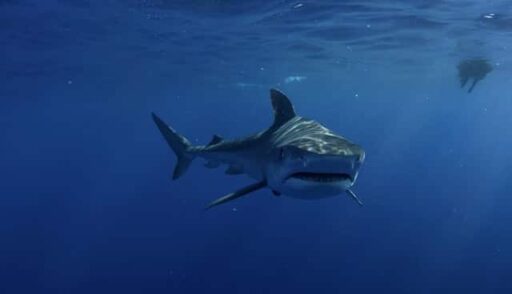
Due to a large increase in the population of fish, the shark population has increased equally – and as a result more shark attacks happen. There is a higher prevalence of sharks farther North than previously due to oceans heating up, resulting from global warming.
Two attacks occurred in 2016 on the Long Beach Island coast. Sharks bit the victims in both incidents as they were surfing. In 2017, there was an assault in Seaside Heights; however, the victim did not sustain any significant injuries.
The best defense against a shark attack is awareness of your surroundings and following the safety tips listed above.
Additionally, there are several techniques to safeguard oneself from a shark attack, such as donning a life jacket, avoiding swimming in shark-infested areas, and employing a shark deterrent.
Thank you for reading this article! There’s many other areas in the United States where there are frequent shark attacks, have a look at Shark Attacks in Florida to learn more.
- Octopus Stuck to Diver’s Back and Won’t Come Off - April 25, 2024
- Magpie Bird Is Reunited with Her Dog Best Friend - April 24, 2024
- Dog Saves Another Dog From Drowning in Fish Pond - April 23, 2024

